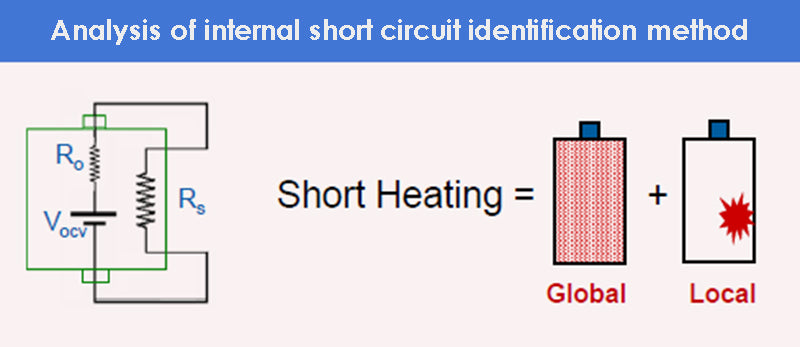
How to Test and Certify Lithium Batteries: Essential Processes and Guidelines
Share
1. Electrical Tests for Lithium Batteries
1.1 Overcharge Test

This test simulates an overcharge scenario where the battery is charged beyond its rated capacity. It is crucial for preventing thermal runaway or internal damage, which could lead to battery failure or even fire. The test is designed to ensure that the battery’s protection circuits can prevent unsafe charging conditions.
- Scientific Reference: According to an IEEE study, lithium batteries need to have charge control circuitry to mitigate thermal risks during overcharging.
1.2 Short Circuit Test
A short circuit test involves creating a direct connection between the positive and negative terminals of a battery. The test assesses whether the battery can handle such extreme conditions without catching fire or exploding. This is vital for ensuring battery durability during accidents or failures in connected devices.
- Scientific Reference: The SAE International guidelines for battery safety emphasize that batteries should be able to resist internal short circuits and prevent excessive heat buildup.
1.3 Forced Discharge Test
In this test, the battery is subjected to forced discharge, meaning it's drained beyond its normal operation. This ensures that a battery can safely handle over-discharge scenarios, which might occur if a device runs out of power unexpectedly.
2. Thermal Tests for Lithium Batteries
2.1 Heat Resistance
Heat resistance tests measure how the battery performs at elevated temperatures. The goal is to ensure the battery will not fail or overheat in high-temperature environments. These tests are important for industrial and automotive applications where batteries might be exposed to extreme heat.
- Scientific Reference: A journal on battery materials mentions that temperature extremes can cause the electrolyte to break down, leading to increased internal resistance.
2.2 Thermal Cycling
This test involves exposing the battery to extreme temperature fluctuations, simulating the environmental conditions the battery may encounter during its lifetime. The goal is to evaluate the battery's resilience and determine whether it can maintain performance despite continuous temperature shifts.
- Scientific Reference: Studies from SAE International confirm that batteries subjected to thermal cycling perform better in terms of cycle life and overall battery stability.
2.3 Fire Exposure
This critical test assesses the battery's response to fire or exposure to extreme heat. Ensuring that a lithium battery can withstand such conditions without igniting or combusting is essential for consumer safety.
- Scientific Reference: According to UL standards, lithium batteries must undergo fire exposure tests to meet global safety expectations.
3. Mechanical Tests for Lithium Batteries
3.1 Vibration Test
Vibration tests simulate the conditions a battery might experience during transport or usage in devices that move or shake. This test ensures that the battery can maintain integrity and safety under continuous vibrations.
- Scientific Reference: The IEC 62133 standard outlines the importance of vibration resistance for batteries used in consumer products and vehicles.
3.2 Shock Test
A shock test simulates impacts or shocks that could occur during handling or accidents. The test ensures that the battery survives these physical impacts without compromising safety.
- Scientific Reference: As per TÜV Rheinland guidelines, batteries must be able to withstand mechanical shocks without leaking hazardous materials.
3.3 Drop Test
This test simulates dropping the battery from a height to assess its structural integrity. It ensures that the battery does not rupture, leak, or ignite when subjected to falls or sudden impacts.
3.4 Crush Test
The crush test involves applying physical pressure to the battery to check its response to compression. It helps ensure that a battery can withstand heavy loads and not explode under pressure.
4. Certification Bodies for Lithium Batteries
(Learn more about Lithium Battery Compliance with Industry Standards and Safety Regulations)
4.1 UL (Underwriters Laboratories)
UL is a globally recognized safety testing organization that certifies batteries for compliance with electrical, mechanical, and thermal safety standards. UL certification is often a must-have for batteries sold in the United States and other international markets.
- Certification Process: UL tests lithium batteries across a range of electrical and mechanical performance criteria, ensuring that the battery meets the minimum safety standards for consumer products.
4.2 TÜV Rheinland
TÜV Rheinland offers certifications for lithium batteries that ensure compliance with EU regulations and international standards. Their tests evaluate battery safety, performance, and environmental impact.
- Certification Process: TÜV tests batteries for multiple aspects of performance, including energy efficiency and safety, ensuring that manufacturers meet the highest international standards.
4.3 SGS and Intertek
Both SGS and Intertek provide comprehensive testing and certification services for lithium batteries. Their testing services cover safety, performance, and environmental impact, including compliance with standards like UL, IEC, and ISO.
Conclusion
The testing and certification processes for lithium batteries are crucial to ensure their safety, reliability, and compliance with industry standards. Through rigorous electrical, thermal, and mechanical tests, manufacturers can ensure that their batteries are safe for use in various applications, from consumer electronics to electric vehicles. By obtaining certifications from recognized bodies like UL, TÜV Rheinland, and SGS, manufacturers gain trust in the marketplace and guarantee that their products meet the highest global standards.
FAQs
-
What is the overcharge test for lithium batteries?
The overcharge test assesses how a battery behaves when charged beyond its capacity, ensuring it doesn’t overheat or fail. -
Why is thermal cycling important for lithium batteries?
Thermal cycling tests the battery’s durability against extreme temperature fluctuations, ensuring its longevity. -
How do vibration and shock tests ensure battery safety?
These tests simulate real-world conditions and ensure the battery can withstand physical impacts and vibrations without failure. -
What is UL certification?
UL certification ensures that the battery complies with strict safety standards for electrical, mechanical, and thermal performance. -
What is the significance of the crush test for batteries?
The crush test ensures the battery can handle physical compression and doesn’t rupture or ignite under stress. -
How do certification bodies impact battery safety?
Certification bodies like UL and TÜV verify that batteries meet safety standards, ensuring they are safe for consumer use.









